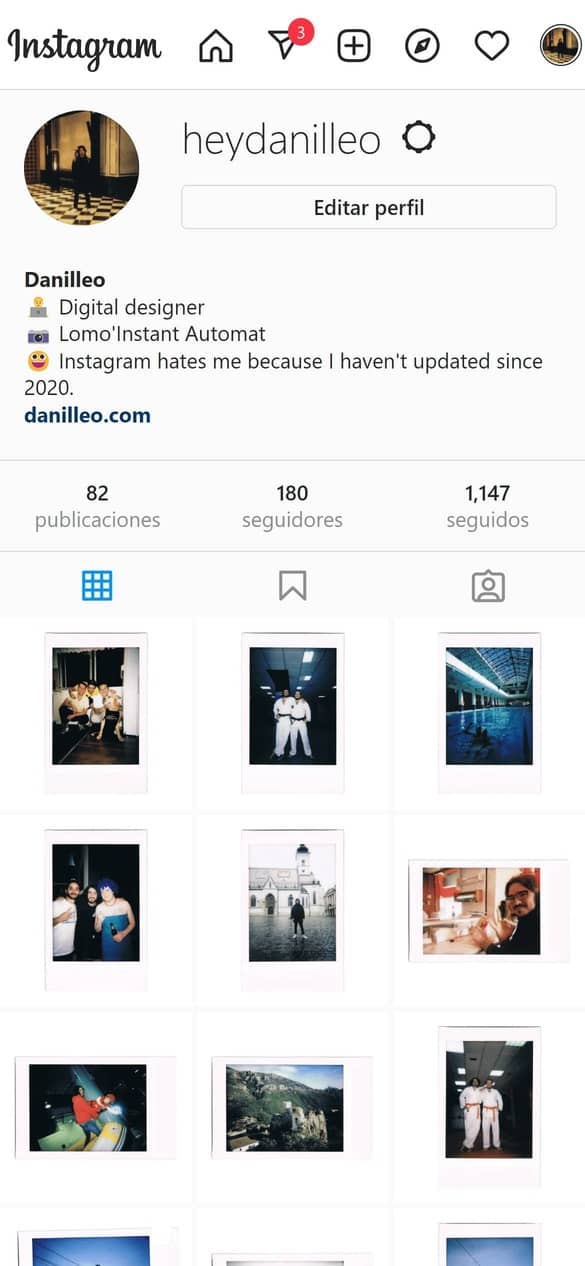As I’m currently involved in developing Instagram filters, I’m contemplating reactivating my profile, even though it’s probably already penalized by Mark Zuckerberg’s algorithm. 😂
Nevertheless, I have no desire to create an entirely new profile, let alone delete my existing one, which contains bookmarks and cherished memories. While my Instagram activity may seem minimal, I actually use it professionally to stay abreast of trends, observe the work of other designers, and explore various studios and projects. Starting fresh with a new account might seem logical, as I used to use it as a hobby and now view it more seriously, but I don’t want to lose the time and effort I invested in it. And why did I stop sharing photos taken with my instant camera? For one simple reason: lomography isn’t exactly cheap. 💸💸💸
So here I am, crafting an article about Instagram, in case I decide to give it another shot. 😅 I know I should!
Size Guide Link to heading
The sizes of Instagram photos and videos vary depending on the orientation. Here are the most common ones:
| Post type | Ratio | Size in pixels |
|---|---|---|
| Profile Picture | 1:1 | 110 x 110 pixels (Recommended 320 x 320 pixels) |
| Square Photo | 1:1 | 1080 x 1080 pixels |
| Horizontal / Landscape Photo | 1,91:1 | 1080 x 566 pixels |
| Vertical / Portrait Photo | 4:5 | 1080 x 1350 pixels |
| Thumbnail Photo | 4:5 | 161 x 161 pixels |
| Stories | 9:16 | 1080 x 1920 pixels |
| Reels | 9:16 | 1080 x 1920 pixels |
Profile Picture Link to heading
Your profile picture is your identification on this social network, even if your profile is private. Given that it’s a small image, simplicity is key to making it recognizable. Although you upload it in a square format, it will be displayed as a circle. Despite having a size of 110 x 110 pixels, it’s recommended to work with higher resolution and export it in the best possible quality.
Feed images Link to heading
There are three options for your feed photos. My recommendation? Pick one and use it consistently. Over time, you’ll accumulate content, and maintaining an aesthetic and symmetrical feed will become easier. In my experience, when I was enthusiastic about sharing lomographic photos, I managed to maintain a solid feed aesthetic by following certain rules and using an Adobe Photoshop project to arrange the images.

Vertical formats are ideal for maximizing screen space and retaining your followers’ attention for longer, but this ventures into marketing territory. On the other hand, horizontal format suits more complex posts that require ample space.
My suggestion? I used to use Photoshop, but nowadays, tools like Canva or Figma might be more appealing.
Stories and reels Link to heading
Here, there’s no complexity—both have the same size of 1080 x 1920 pixels. Additionally, Stories’ cover images have dimensions of 161 x 161 pixels.
And with that, my contribution for today concludes. Most people are already familiar with this information, but in my case… I didn’t know! 🥲